You can run this Sacramento half marathon, even if you’ve never run a race before. Here’s how
In just a couple of months, thousands of runners will take their places at the starting line of one of Sacramento’s most popular half-marathon races: Urban Cow.
Many will do it for the first time.
The 13.1-mile race on Oct. 1 begins and ends in William Land Park — guiding runners through tree-lined streets, into downtown for sites of the State Capitol and the Tower Bridge, through Old Sacramento and along the Sacramento River.
You can run a half marathon, even if you’ve never run a race before.
“The biggest thing is you have to be passionate about your goal, but you also have to enjoy and respect the process to getting there just as much,” said training programs director Sean Garbutt with running retailer Fleet Feet.
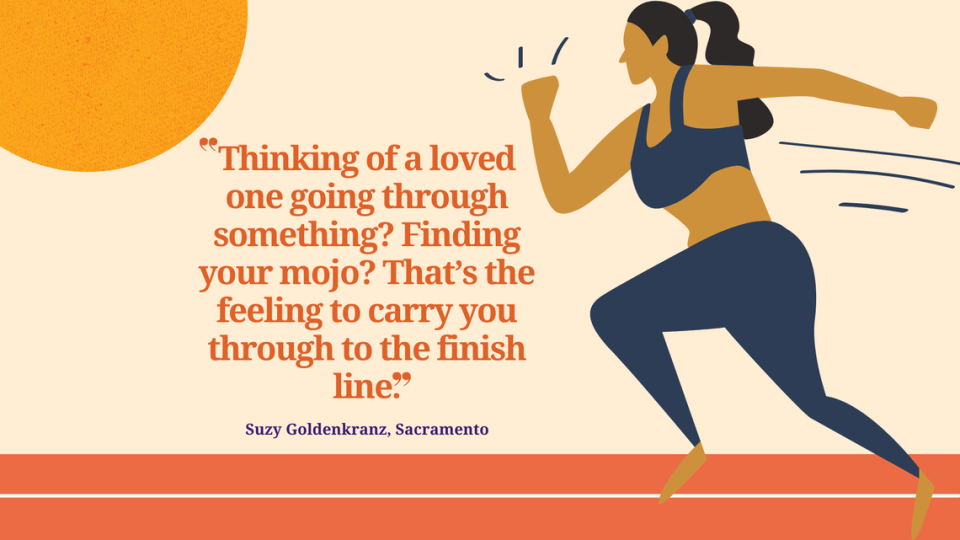
Step 1: Find a training plan
A solid training plan typically takes 12 weeks for a beginner.
Daily achievements — finishing a run at your best time or gaining control of your breathing — add up to your final ability. The months, weeks and days leading up to the race are pieces of a puzzle, said Garbutt, who has trained between 200 and 300 runners each year for Urban Cow.
“When you stand there on race day, you have your completed puzzle,” he said.
Use this rule as an entry point, and adjust as needed: Run five days a week, including three easy-paced runs, one speed workout and one long-distance run.
Free training programs are available online and on apps like Nike Run Club, Runna and Strava.
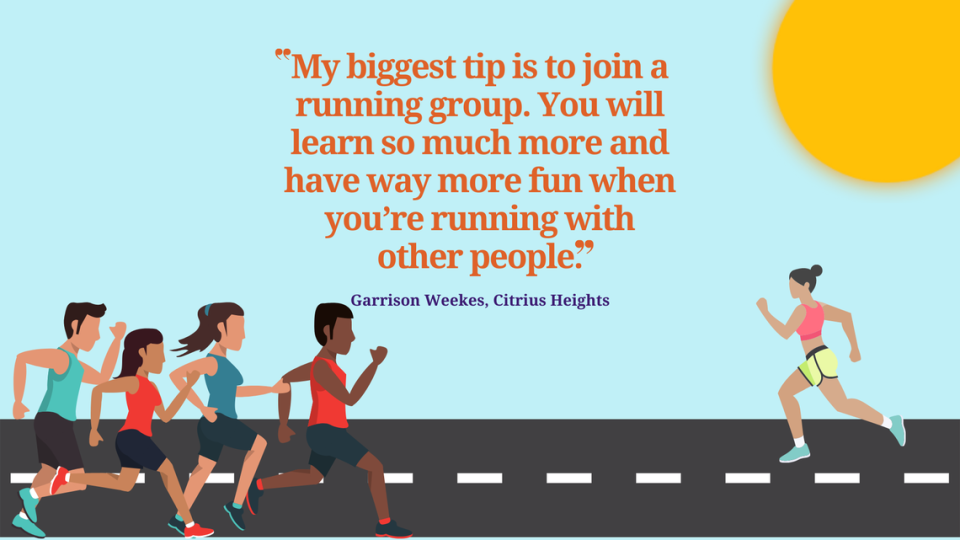
Step 2: Running shoes
Your running shoes should act like a helmet protecting your feet, knees and joints.
Garbutt recommends getting your foot professionally fitted so you know what you’re buying supports the shape of your foot and gait.
“You don’t have to have the most expensive option, you don’t have to have the newest model,” he said. “You just have to have something that fits and works for you.”
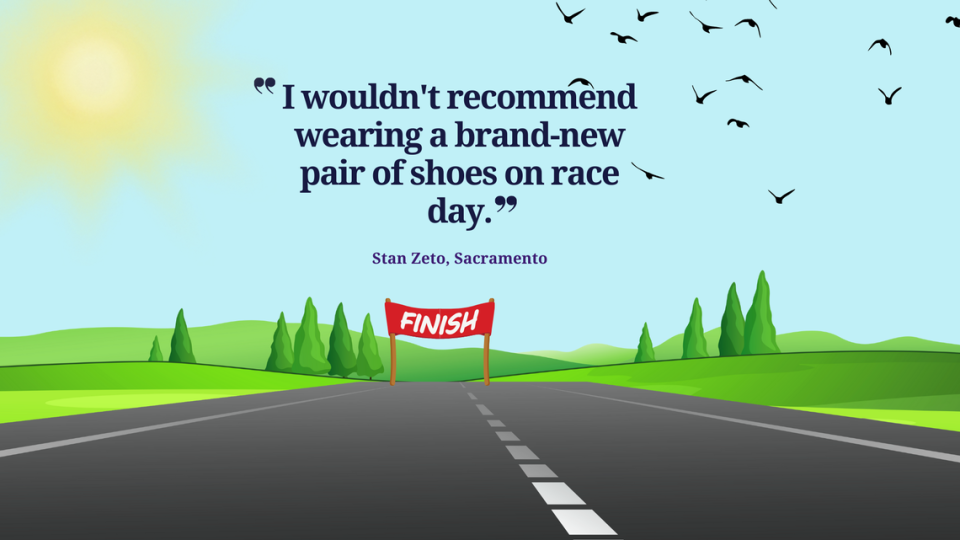
Step 3: Listen to your body
“Your progress is relative to your own abilities,” Garbutt said, “you’re not competing with anyone else.”
“You’re just trying to become a better runner yourself.”
Record your workouts and track your progress, whether it’s on an app or with pen and paper, to curb the urge to compare your abilities to others.
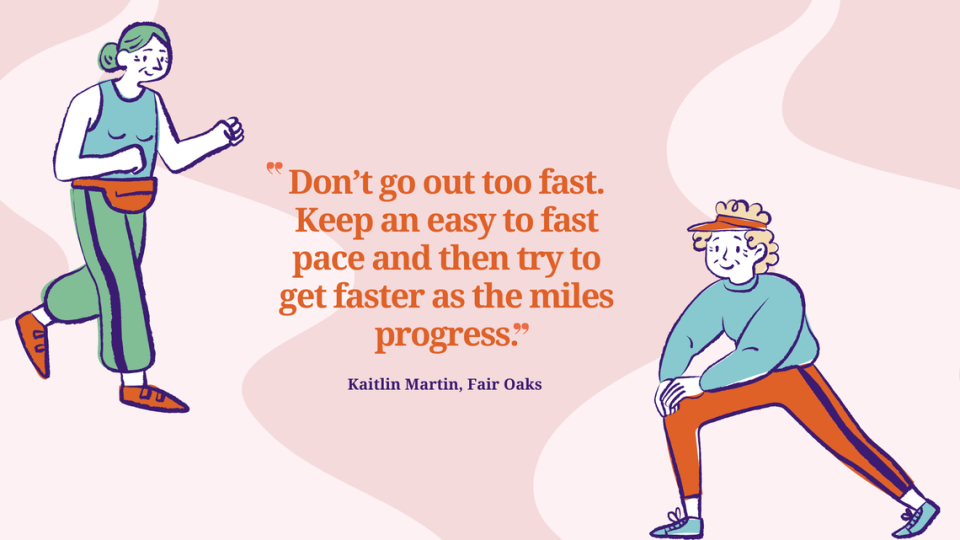
Step 4: Race Day
Find out where you need to park, pick up your bib and leave your belongings, what the weather will be like and how many runners are participating. Then, make a race-day plan you can review the week leading up to the big day.
Eat lots of carbohydrates — like pasta, rice and bread — three days before race day so they can be stored in your muscle cells and digested, Garbutt said, then later metabolized. On the morning of the race, eat roughly 500 calories of carbohydrates a couple of hours before you take the starting line.
“When you’re standing on the starting line, ignore everyone else,” he said. “Tune out everything but that fun encouraging energy.”
Eat about 25 grams of carbohydrates once the race starts — running gel, chews, a homemade snack or even sips of a sports drink — and every 30 minutes after that.
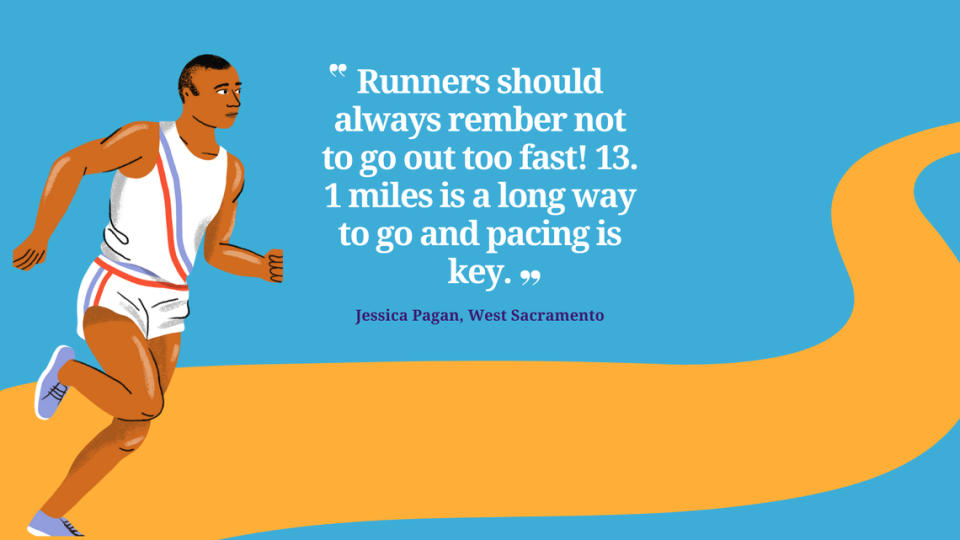
What do you want to know about life in Sacramento? Email servicejournalists@sacbee.com with your top-of-mind questions.


